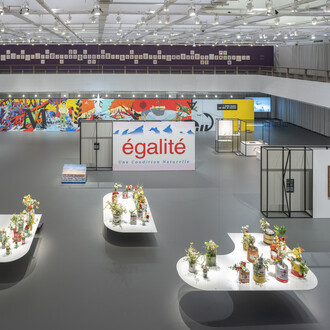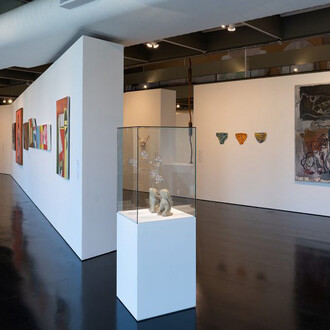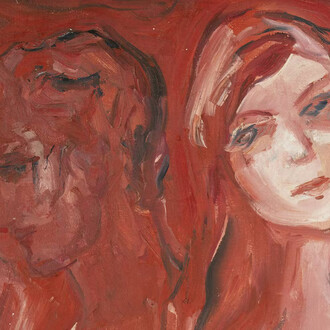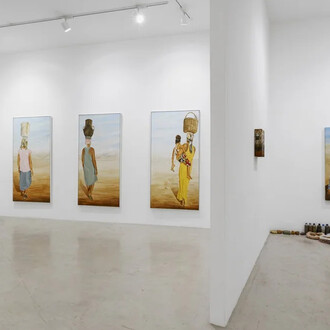The set of works showcased in Failed Acts suggests an on-going movement interrupted and renewed in each drawing. The works vibrate with an internal pulse, to the rhythm of an eternal mismatch between areas filled with colour and the emptiness of zones left white. Drawing directly on paper without a prior sketch, Marcia de Moraes uses the previous work as a parameter to draft a new composition. In the manner of a cadavre exquis, it is this previous composition that suggests the tracing, the areas of colour and the constituting lines of the next work.
Currently, despite a compositional harmony in which the colour masses are balanced, it is more difficult to discern an underlying order to the drawing, which seems to be pierced by a vertical or horizontal stream, causing the eyes to be directed out of the limits of the paper. The voids gain in proportion, invading the entire surface of the drawings, in an intricate labyrinth of gaps. It is in the act of looking that the enlarged hiatus between form and background must be supplied.
It comes as no surprise that it is in this moment, when the idea of rupture becomes increasingly present in her work, that Marcia de Moraes begins to develop a series of collages. The artist uses parts of her drawings, remains of potential compositions, and arranges them in a new disposition that results in a complex angle of meshes and colours. Fragmentation is here materialized by an effective discontinuity that not only happens through the interruption of the lines, but also through the physical superposition of the different intricate planes of paper.
Increasingly, this dynamic of disruption and fissuring in Marcia de Moraes' drawings and collages, seem to induce a displacement of the gaze. To a certain extent, these formal interruptions can allude to the psychoanalytic notion of "lapsus", that, in Portuguese, inspired the name of this exhibition. As explained by Sigmund Freud in the early twentieth century, the lapsus would be errors in actions or speech, breaches in speech and in the logic of linear thinking caused by the unconscious. Both in her process - in which a work, as well as any possible failures, are the starting points for the next one - as in the condition of sketch suggested by the errors and graphite traces left apparent, or in the presence of some figurative elements from everyday life, the work of Marcia de Moraes seems to refer to such lapses of memory or speech for no apparent reason.
These compulsive behaviours and unconscious shortcuts, according to the analyst, had the intention to externalize a deep and hidden desire. From this perspective, perhaps Marcia de Moraes' aspiration could be crystallized in an on-going quest for a vertigo induced by the loss of references and the oscillation between repeated lapses and a continuity that escapes through the edges of the paper.
Marcia de Moraes (São Carlos, Brazil, 1981) holds a Bachelor Degree and a Master of Arts from UNICAMP. Among her solo exhibitions are: 2014, "Cheio de Vazio - Elaine Arruda and Marcia de Moraes", Instituto Tomie Ohtake, São Paulo; 2012, "Corpo Duplo", Galeria Leme, São Paulo; 2011 " Correspondance Bresilienne: Saint Clair Cemin & Marcia de Moraes", VL Contemporary, Paris. In 2010 the artist attended a residency at La Cour Dieu in La Roche-en- Brenil, France; in 2011 Marcia participated in another residency, at Carpe Diem Art and Research, in Lisbon, followed by a solo exhibition at that same institution. In 2013, with the support from the Ministry of Culture, she was a resident at the Fundación Ace, Buenos Aires. In 2011 she won the Funarte Award for Contemporary Art, São Paulo.












